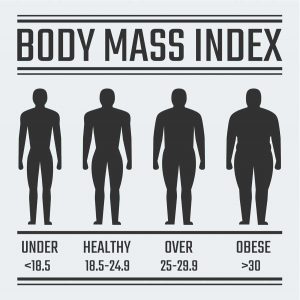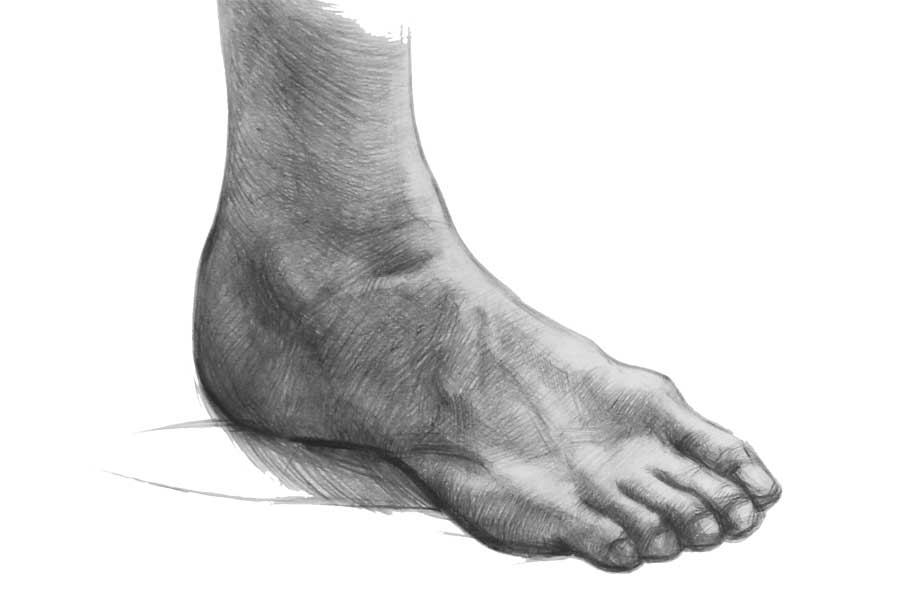Excess Weight: Should You Worry If You’re Just a Bit Heavy?
19 Sep 2016
A Weighty Subject
By Shannon Burgert Since 1960, the prevalence of obesity has risen steadily. Three years ago, the American Medical Association classified it as a disease. Though the trend is slowing, more than a third of American adults are now classified as obese, and another third are overweight. Obesity raises the risk for more than 30 chronic health problems. It is among America’s greatest public-health challenges. But what’s the tipping point on the scale? When should excess weight become a concern?
How Is ‘Excess’ Weight Determined?
The question of when to worry is complicated by the methods we use to quantify excess weight. The most common tool is the body mass index, or BMI, which measures body fat based on a person’s height and weight. BMI categorizes people as underweight (below 18.5), normal (18.5-24.5), overweight (25-29.9), obese (30-39.9) or extremely obese (40 and above).* While BMI is standard, it doesn’t take into account a person’s frame size or body composition—that is, the percentage of muscle or fat a person has. Consider a football player who is bulky but extremely muscular. His BMI may suggest that he is obese, when in fact his percentage of body fat may be quite low. On the flip side, BMI may underestimate body fat in elderly individuals, who lose muscle mass over time. (It takes more calories to maintain muscle mass than fat tissue, so as people age and lose muscle mass, they should curtail their caloric intake.) Other methods of measurement, including waist circumference, waist-to-hip ratio and scales that analyze body composition, can provide additional information on body fat.Numerous online tools can calculate your body mass index; just search “Calculate BMI.” Some, including cdc.gov/healthy weight/assessing, will register half-inches of height instead of making you round up or down.The amount of excess fat is important, but where individuals carry that fat also plays a role in the risk level for health issues, notes registered dietician and personal trainer Lindsay Lawes of Boulder Nutrition and Exercise. Lawes explains that a person who is apple-shaped, carrying weight around the midsection, is generally at a higher risk than someone who is pear-shaped, carrying the same amount of weight, but lower, in the hips and thighs. A general guideline for concern, she says, is when a woman’s waist measurement exceeds 35 inches in circumference, or when a man’s exceeds 40 inches. The problem with belly fat is not only the subcutaneous fat that you can grab, but the visceral fat that builds up deeper inside, surrounding your internal organs. Visceral fat is linked with more health risks. It produces toxins such as cytokines, which cause inflammation and can contribute to cancer. They lessen the body’s sensitivity to insulin, which can lead to type II diabetes. Cytokines also boost chances of heart disease. And this is noteworthy: Studies have linked increased risk of cardiovascular disease to a large waistline, even on women who fall within a normal BMI range. When it comes to belly fat, crunches aren’t the answer. Lawes says the idea that you can “spot reduce” fat—commonly suggested in recent years in regard to belly fat—is a myth. To lose weight in one area, such as the belly or arms, a person really needs to lose weight overall. Ready for some good news? According to the National Institutes of Health, even a small amount of weight loss, by 5 to 10 percent, can reduce risk for disease.
A Complex Picture
For some people, weight gain and loss may simply be an issue of lifestyle—particularly diet and exercise—but for many people that’s a gross oversimplification, Brunschwig says. Obesity is complex and may be affected by genetics, metabolism, behavior, economics, culture and social influences.
and personal trainer, says that for healthy weight management, exercise simply can’t be left out. (photo courtesy Boulder Nutrition and Exercise)
Weight-Loss Tips
Get some sleep. Try for a solid seven or eight hours a night. Use digital tools. There are a slew of devices that can help you track calories and activity. They include smartphone apps, wearable devices like the Fitbit, and scales that not only measure body composition, but send data to smartphones. Some offer a social component, which can help with motivation. There are also apps targeted toward kids, with games, music and age-appropriate content. Write it down. Write down everything you eat, even if temporarily. It improves awareness of what you’re taking in. Forgo fruit juice. “Juice should not be allowed on shelves,” declares dietician Lindsay Lawes. The fat-reducing fiber has been removed, and the pure fruit sugars are really not much healthier than a sugary soda. A smoothie is fine, but limit the fruit to not much more than a cup, and throw in a protein source such as protein powder, Greek yogurt or peanut butter. Cut back on booze. The beer belly is notorious, but drinking too much of any type of alcohol adds up. Add exercise to your calendar. Put it in there just like you would a doctor’s appointment, which you wouldn’t miss, Lawes says. For healthy weight management, exercise simply can’t be left out. Walk while you’re on the phone. All those minutes on the phone with your family and friends add up to a lot of steps. Take advantage of those 5 minutes. Lawes emphasizes that exercise doesn’t have to happen in one chunk. Fit in a few flights of stairs or a walk to the mailbox, whenever you have time throughout the day. Find exercise you enjoy. Water aerobics? Tennis? Dancing? Lawes suggests linking exercise with pleasant pastimes, if you can. If you ski, for instance, take a ski-conditioning class. Take baby steps. If you have a lot to drop, says Lawes, don’t aim for 50 pounds; go for 5 to start with.
Shannon Burgert, Ph.D., teaches fifth grade in Louisville.












